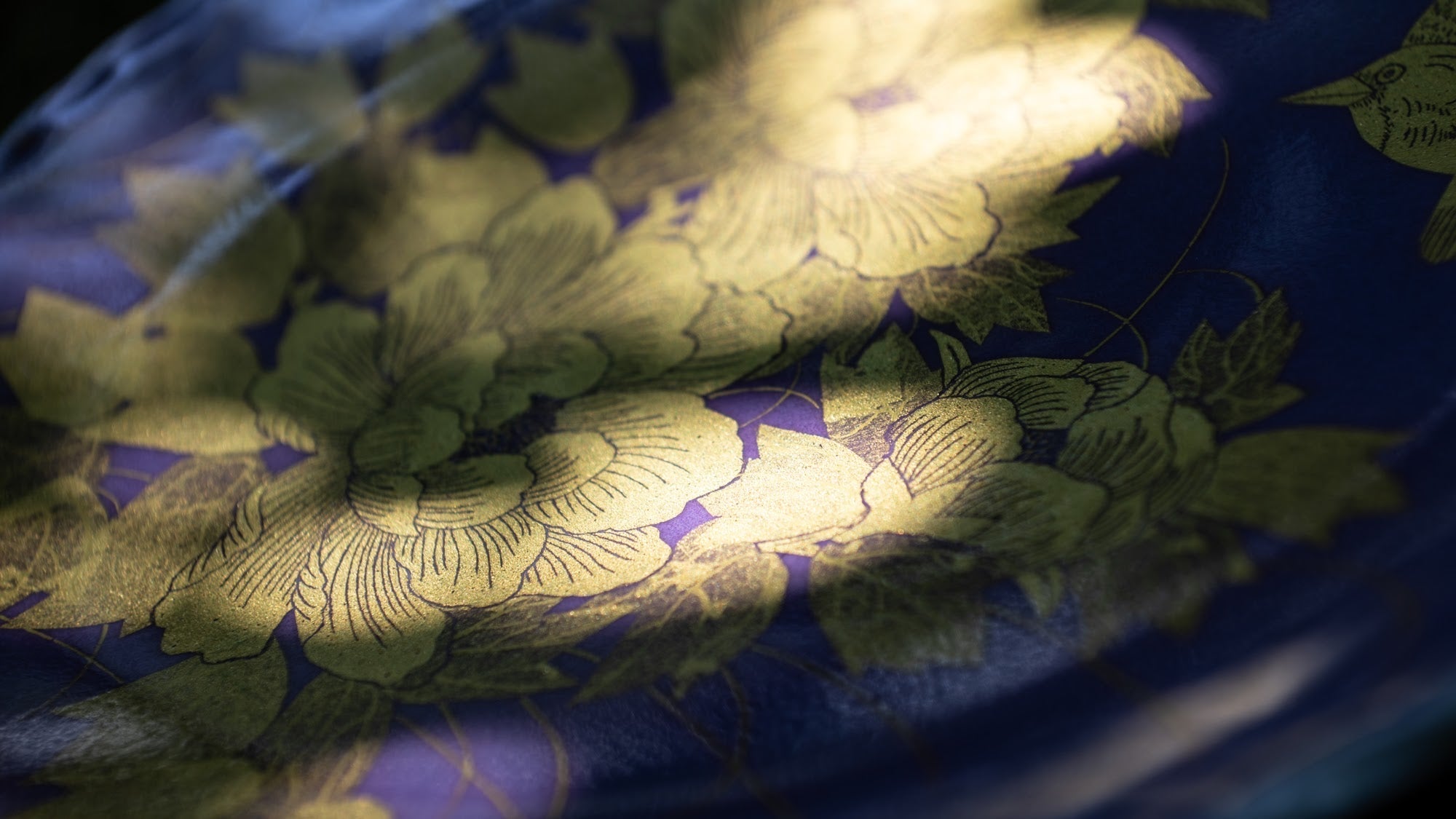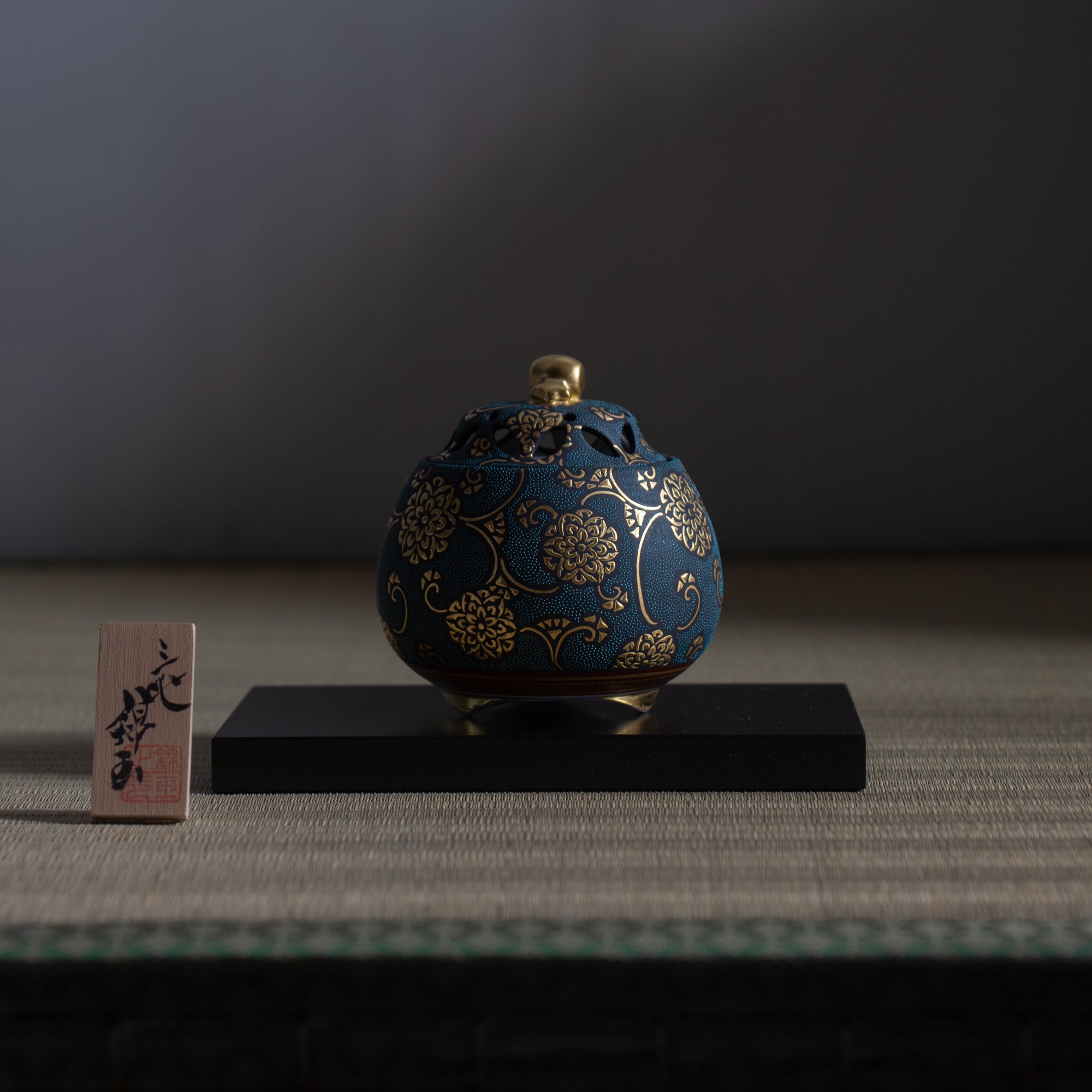
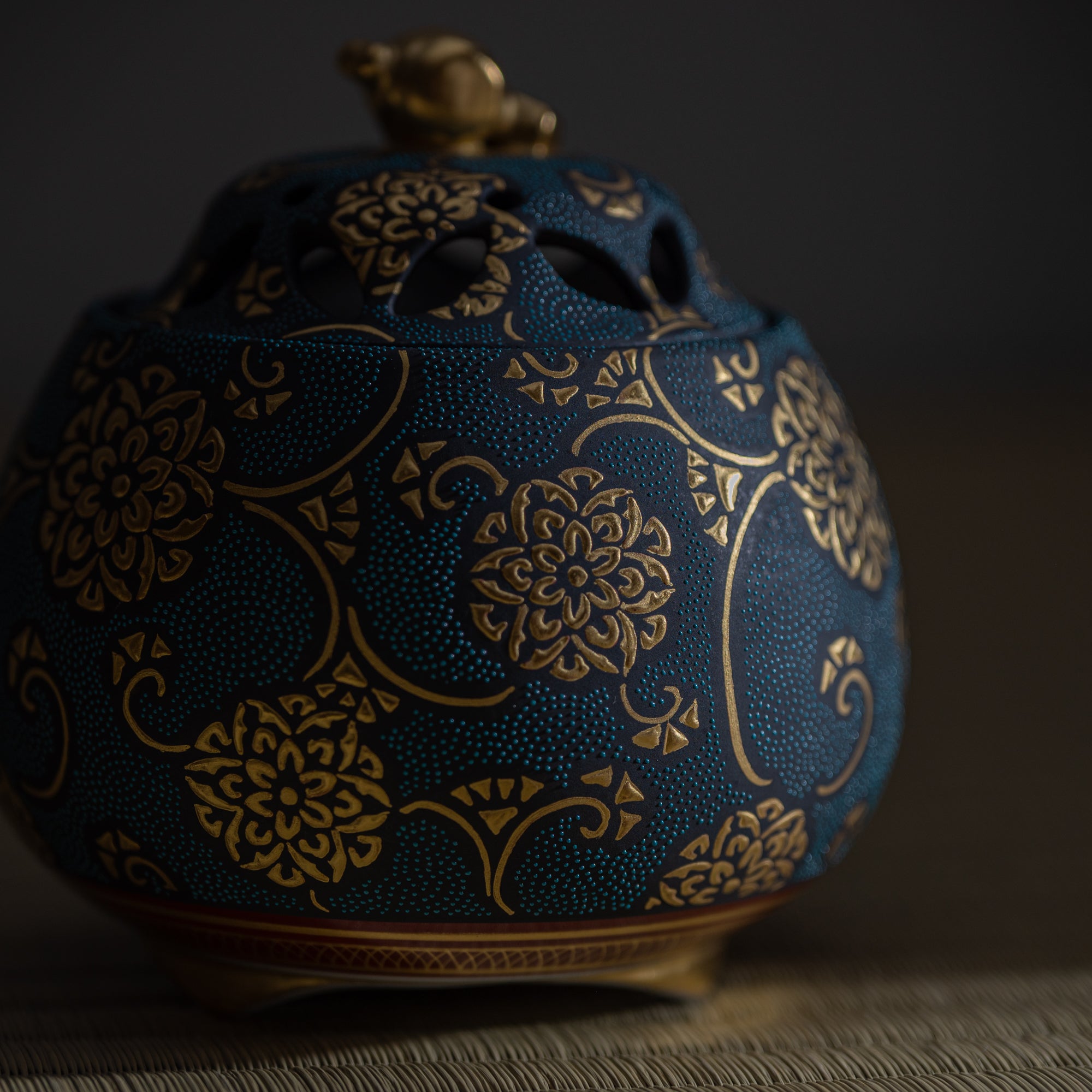
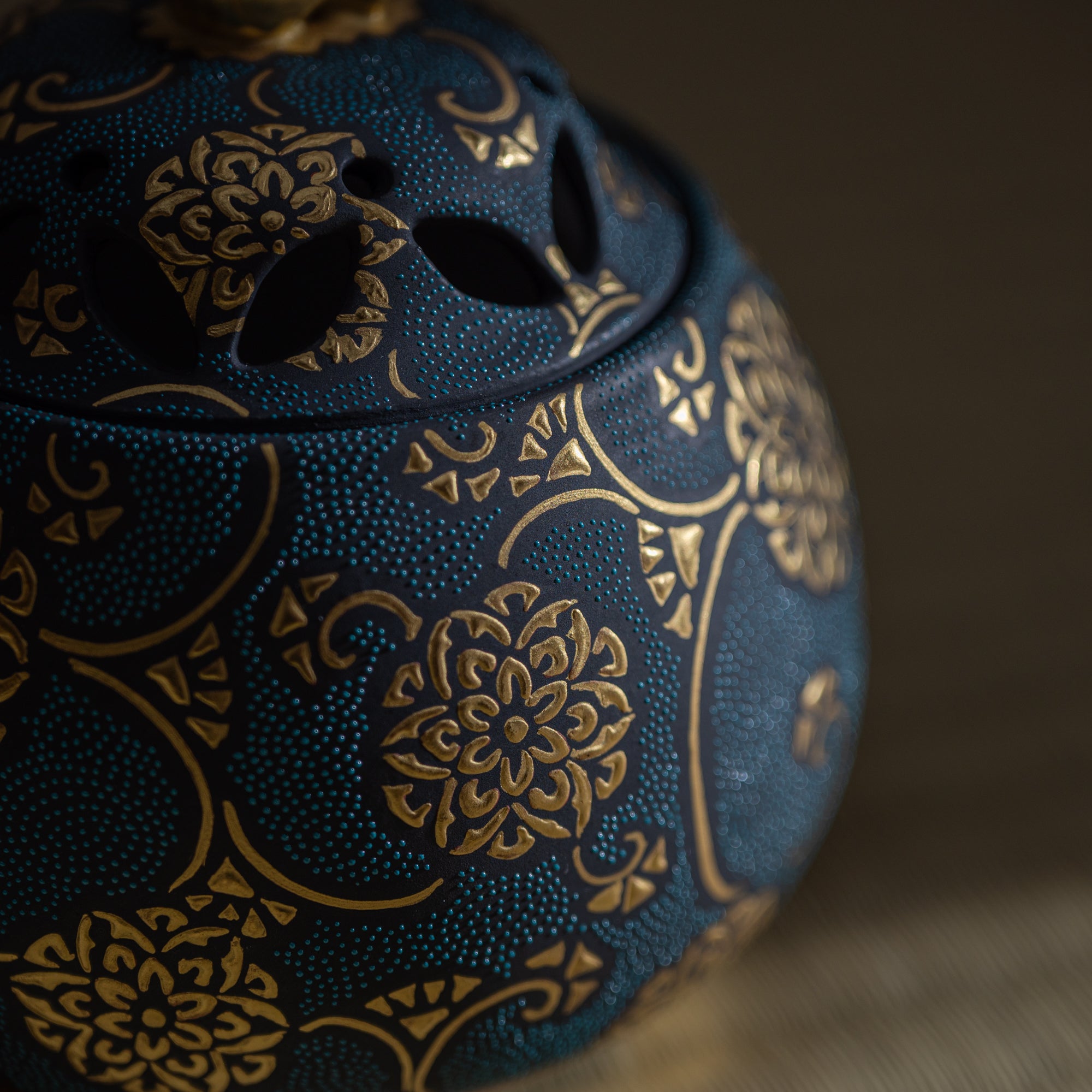
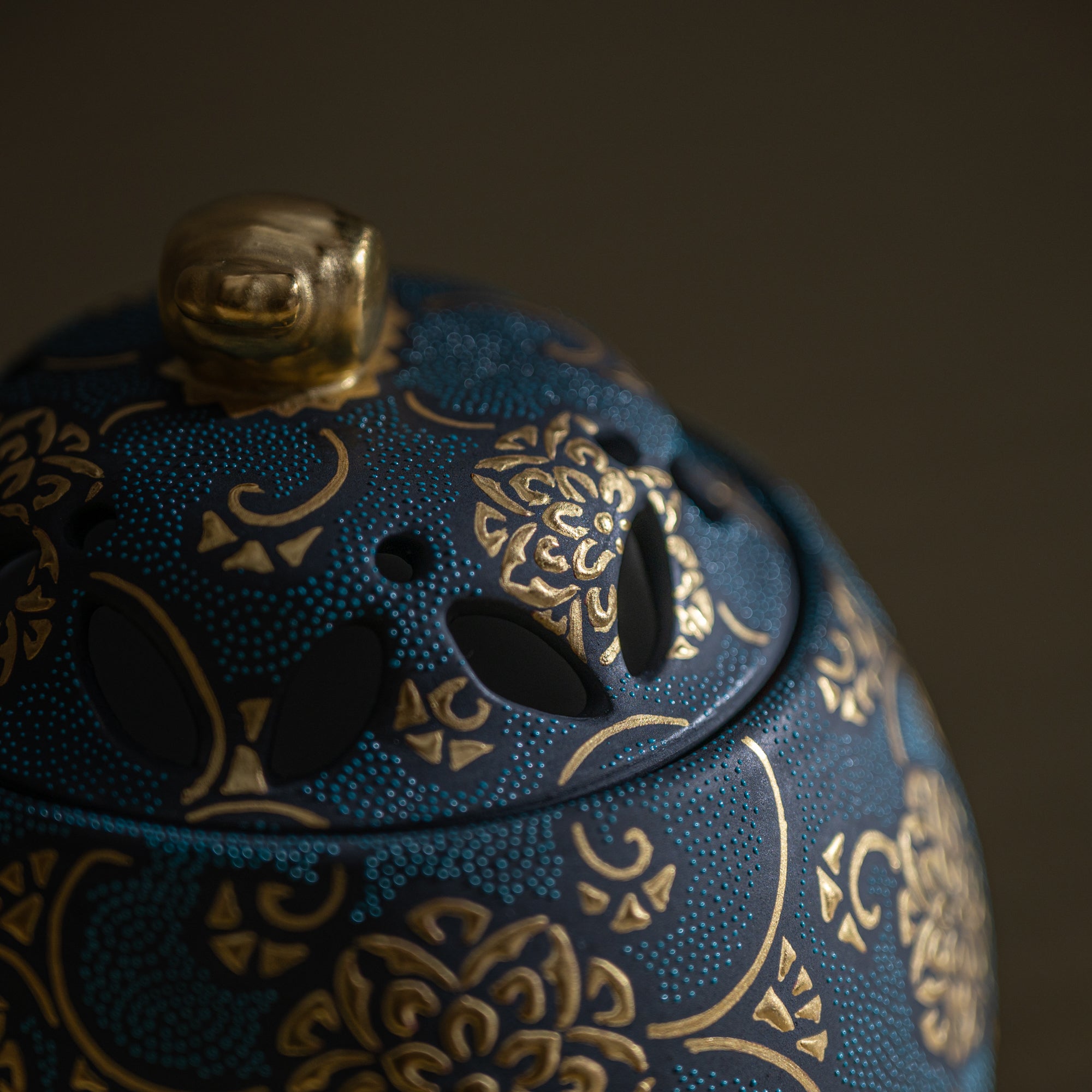
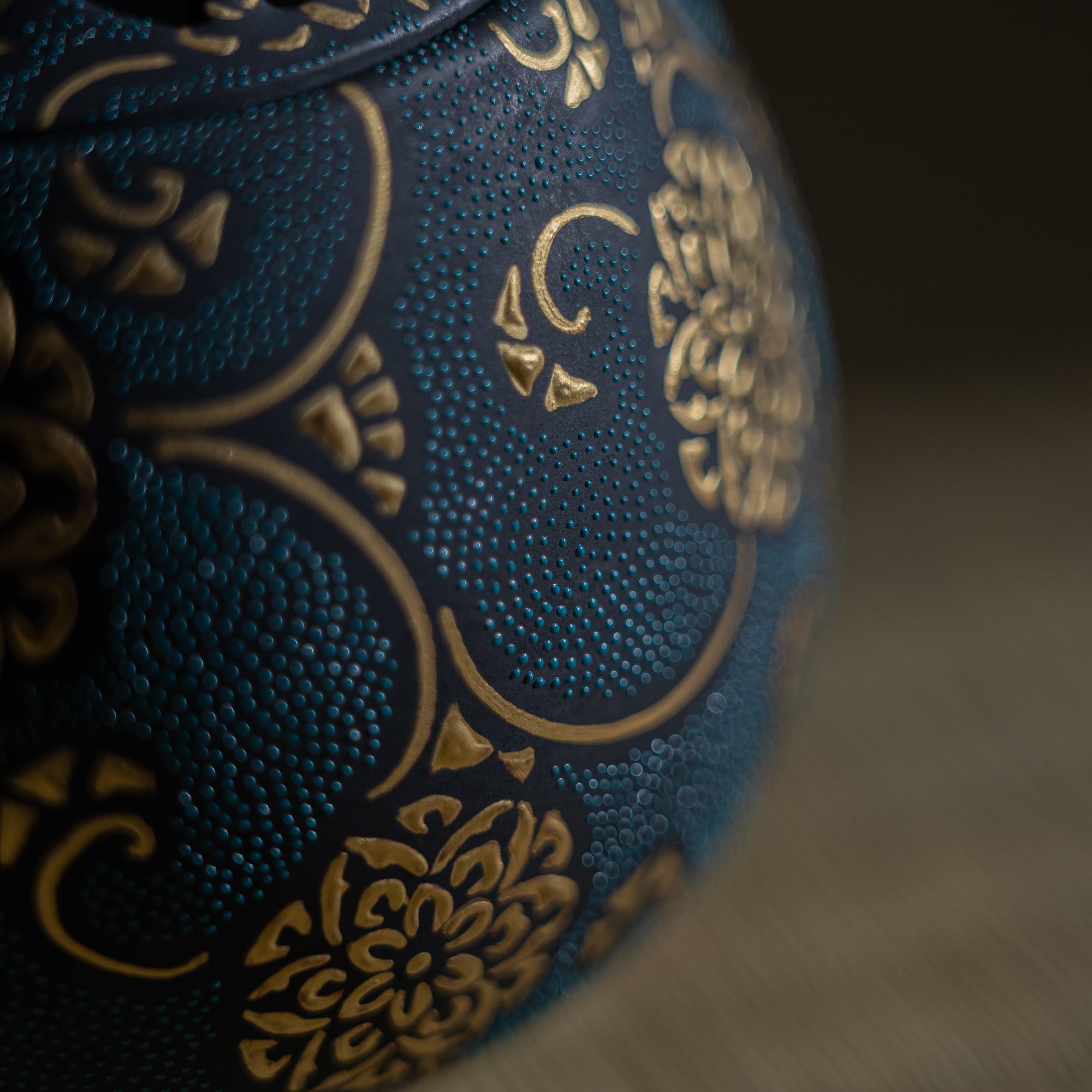
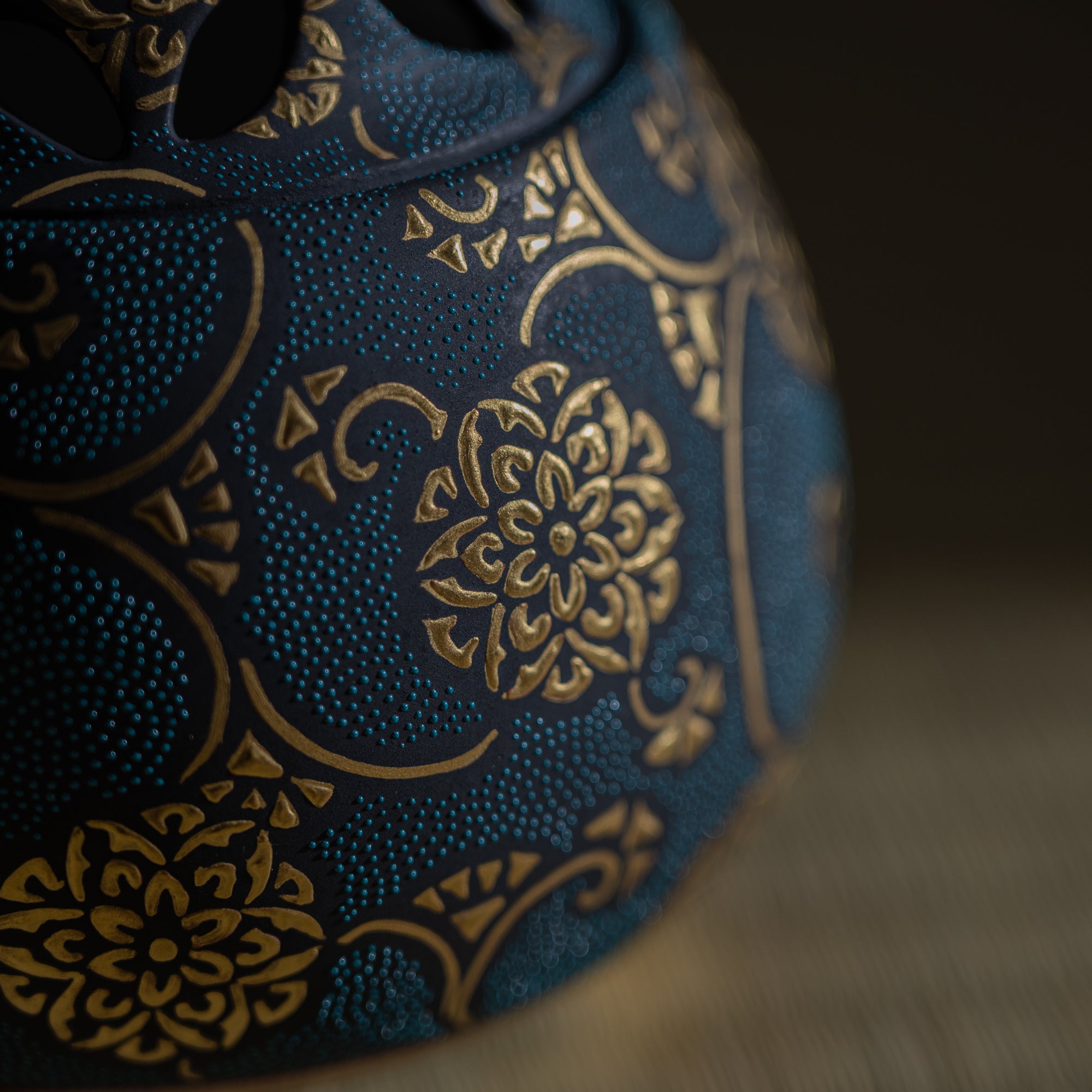
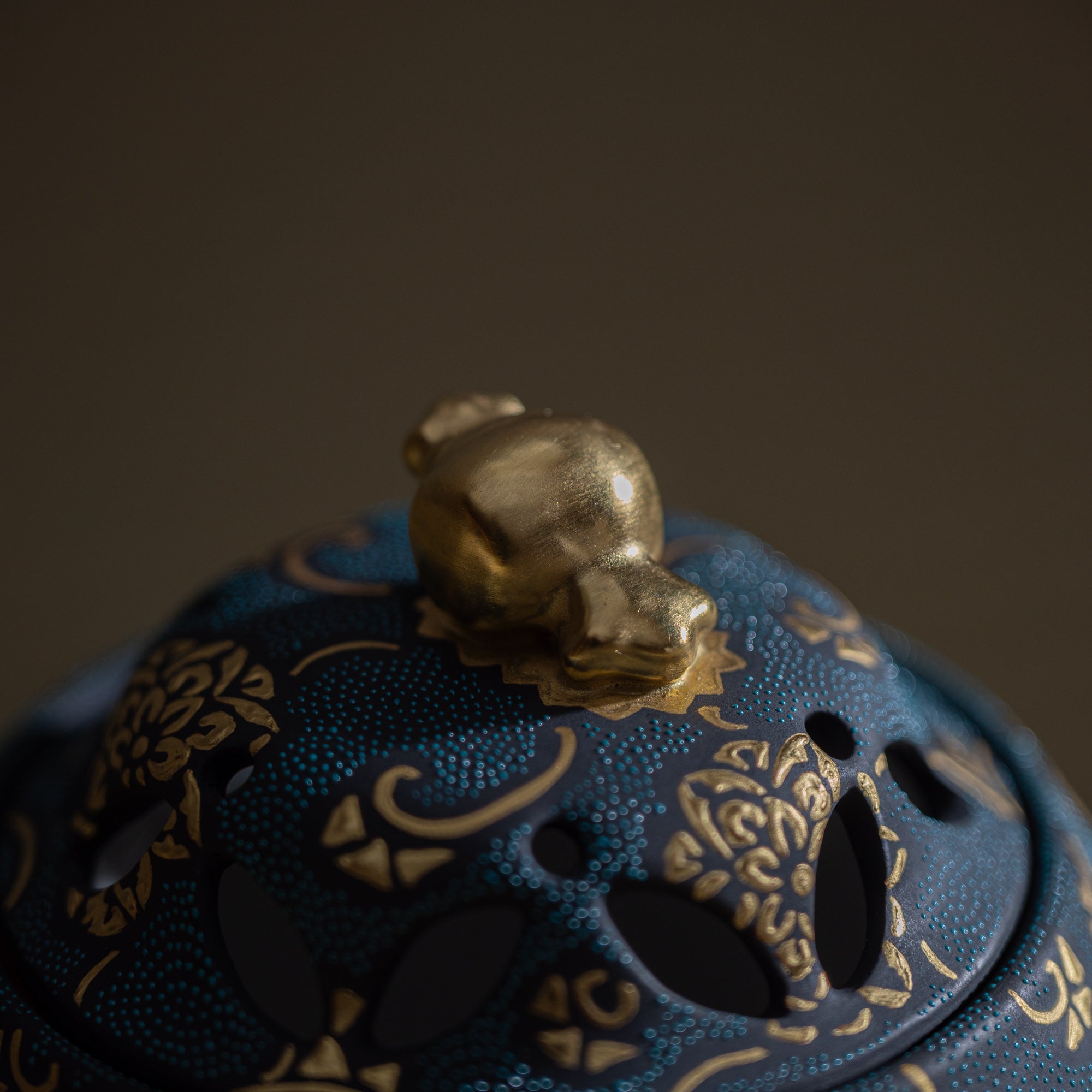
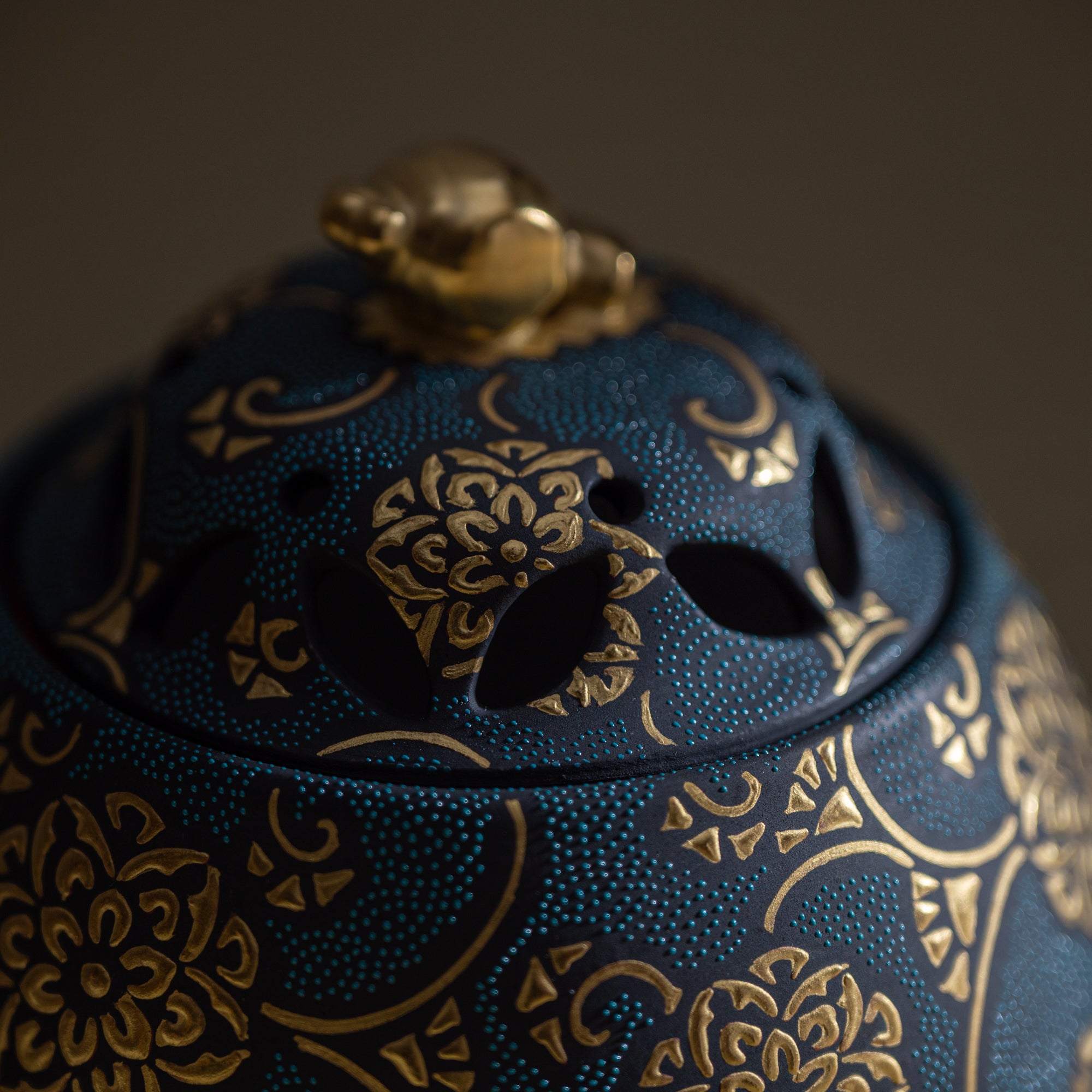
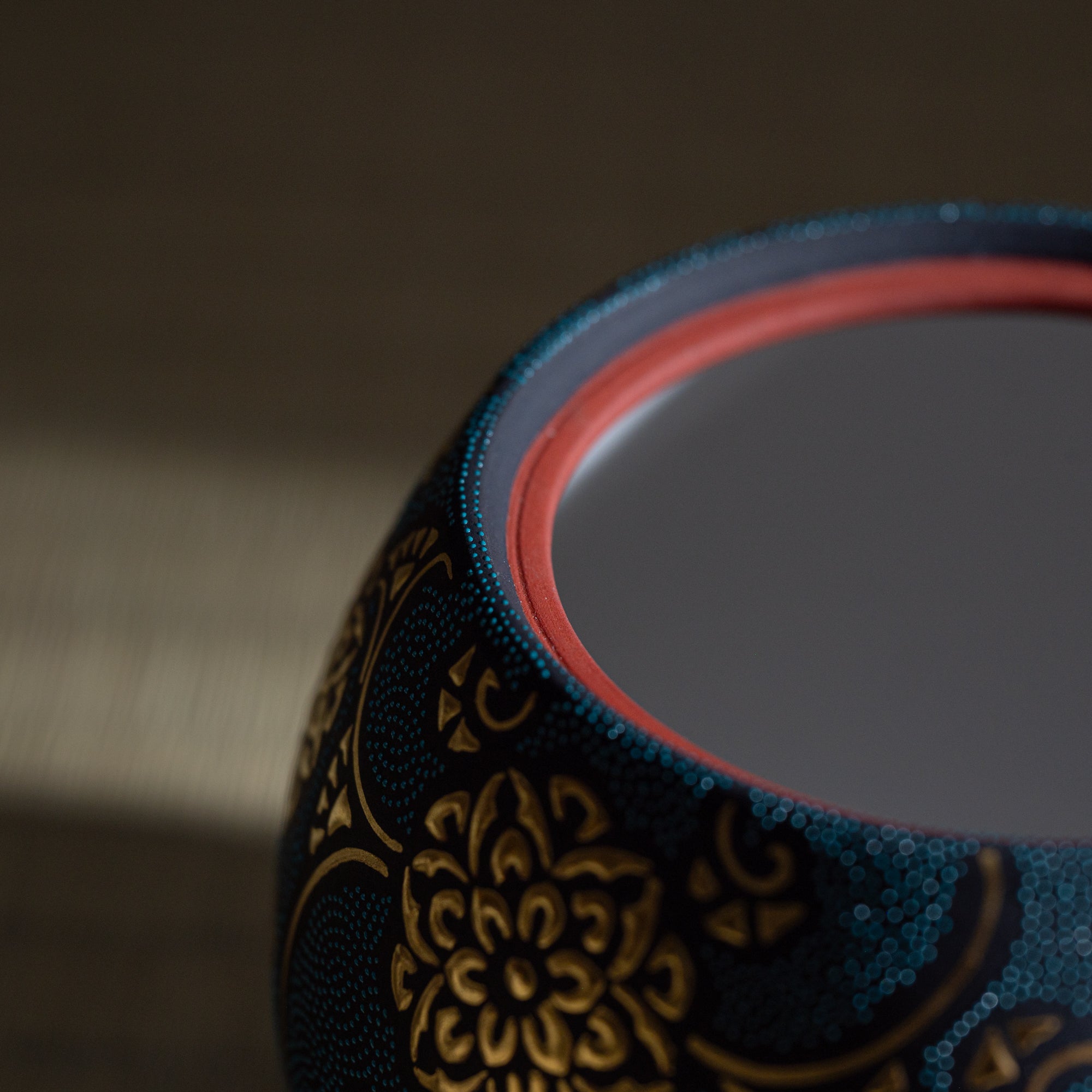
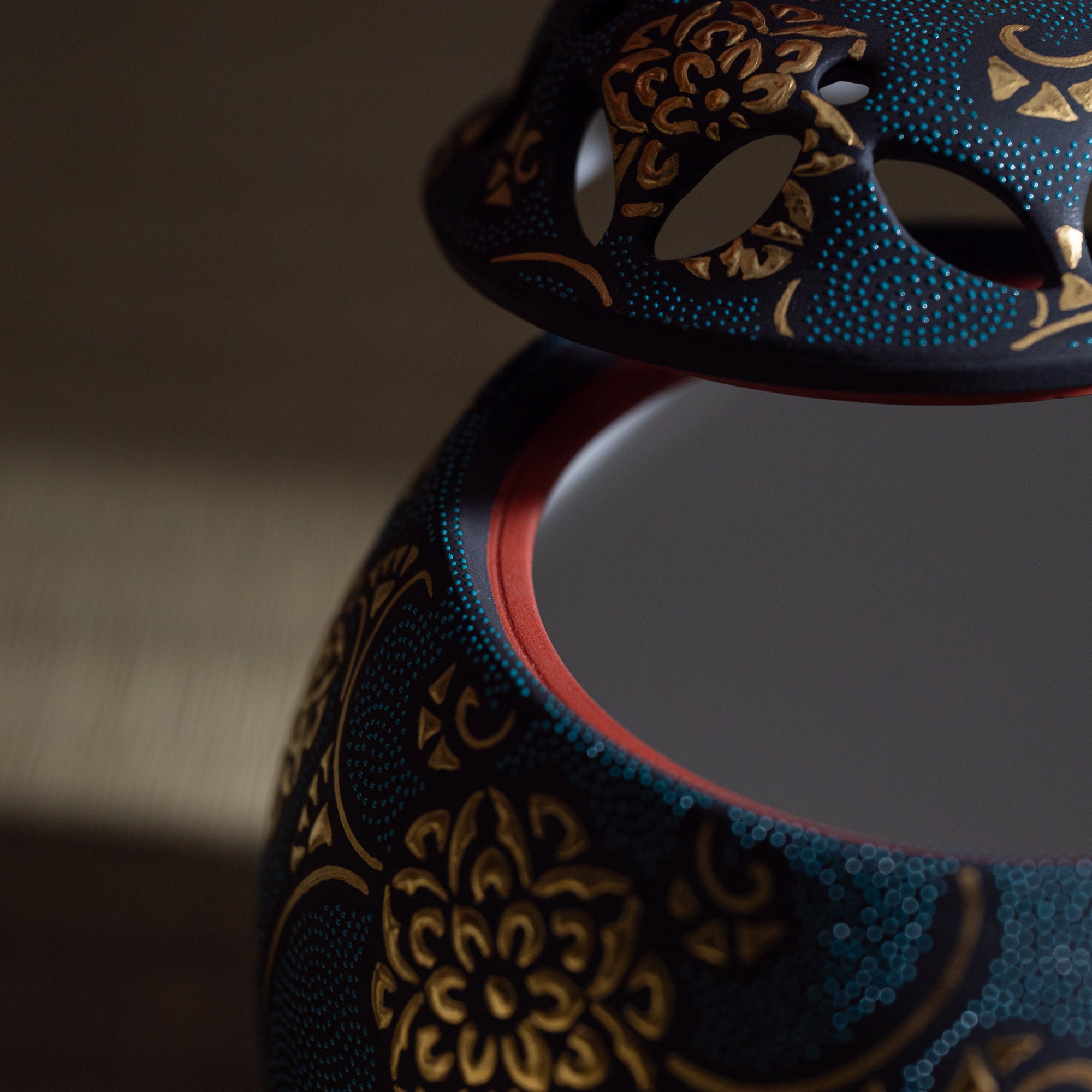
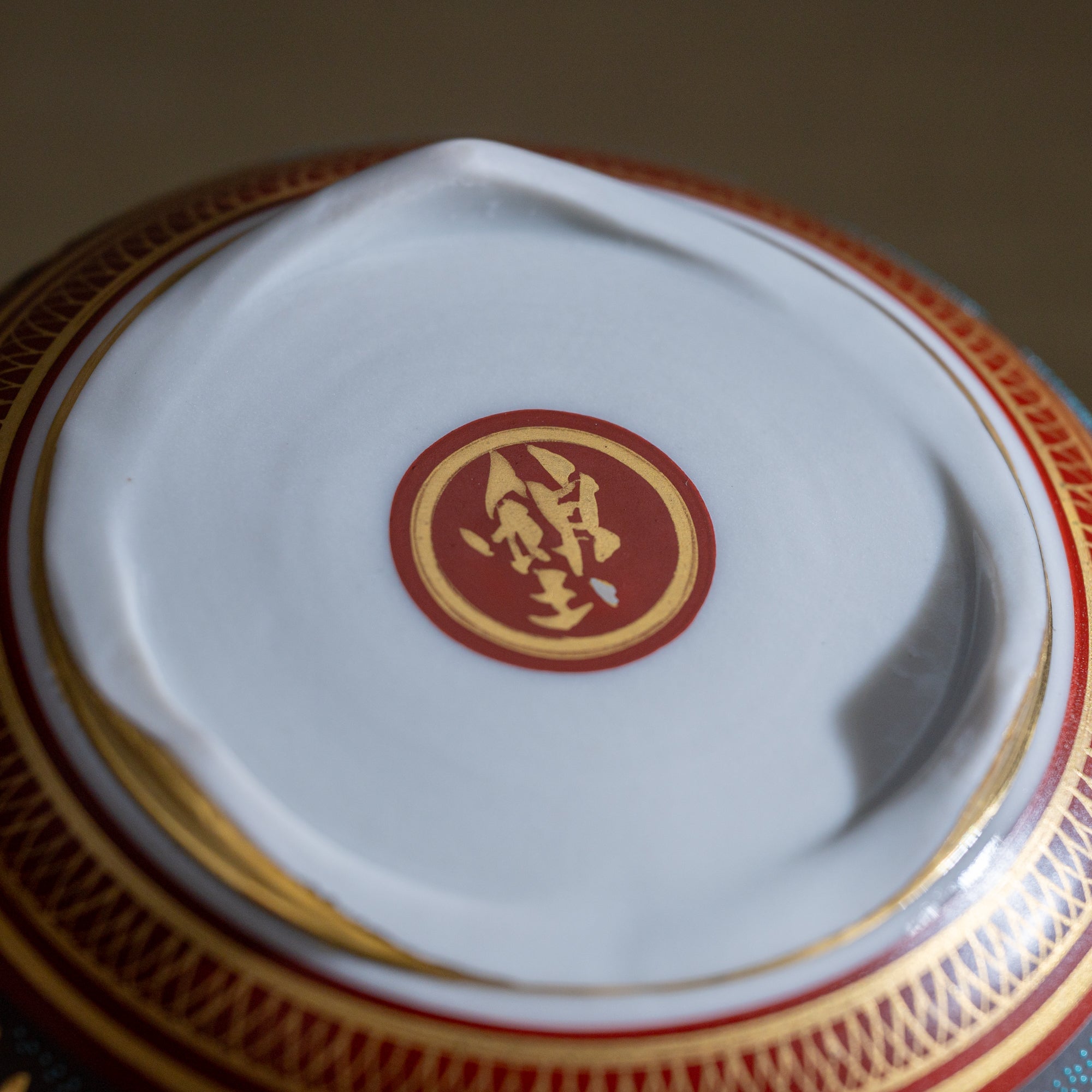
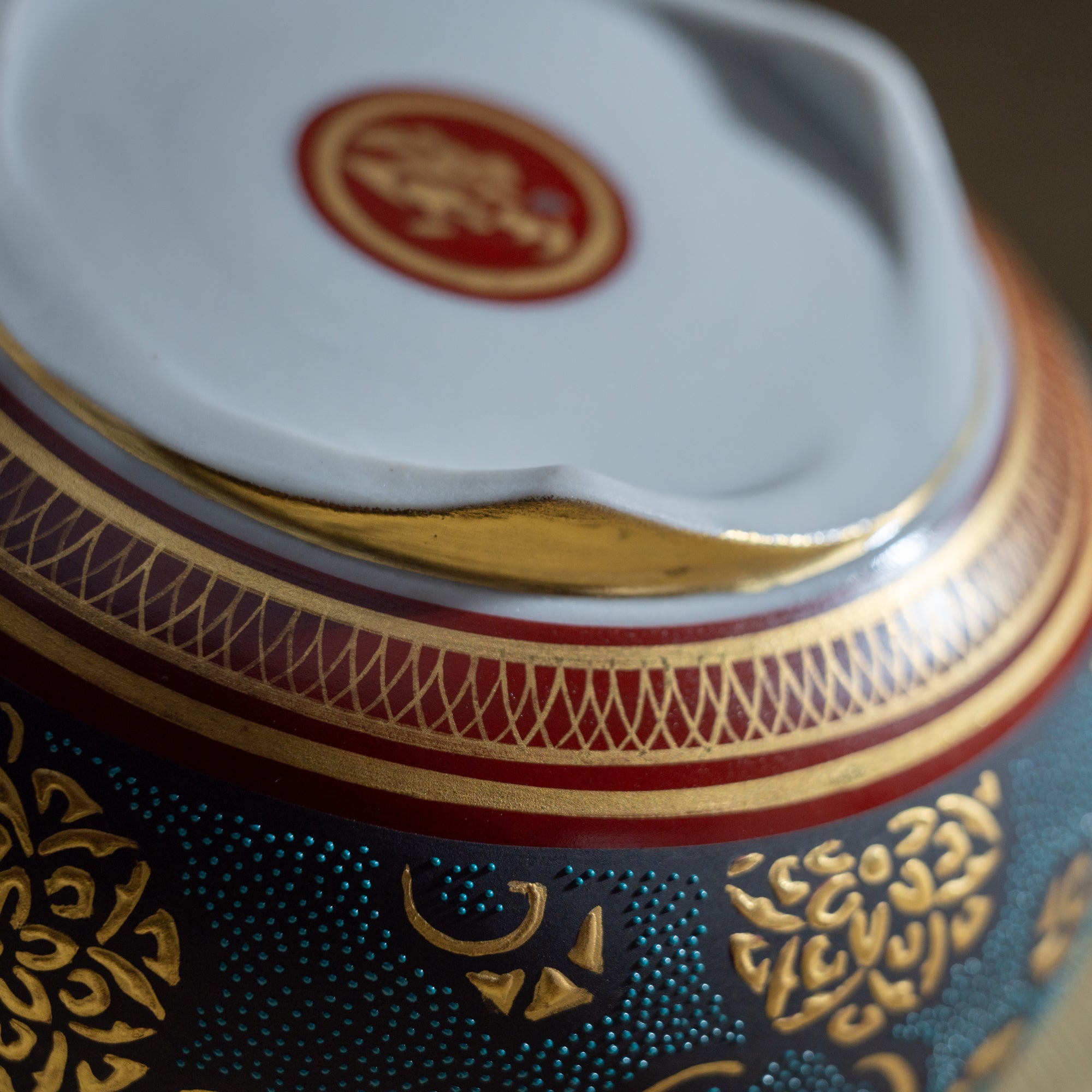
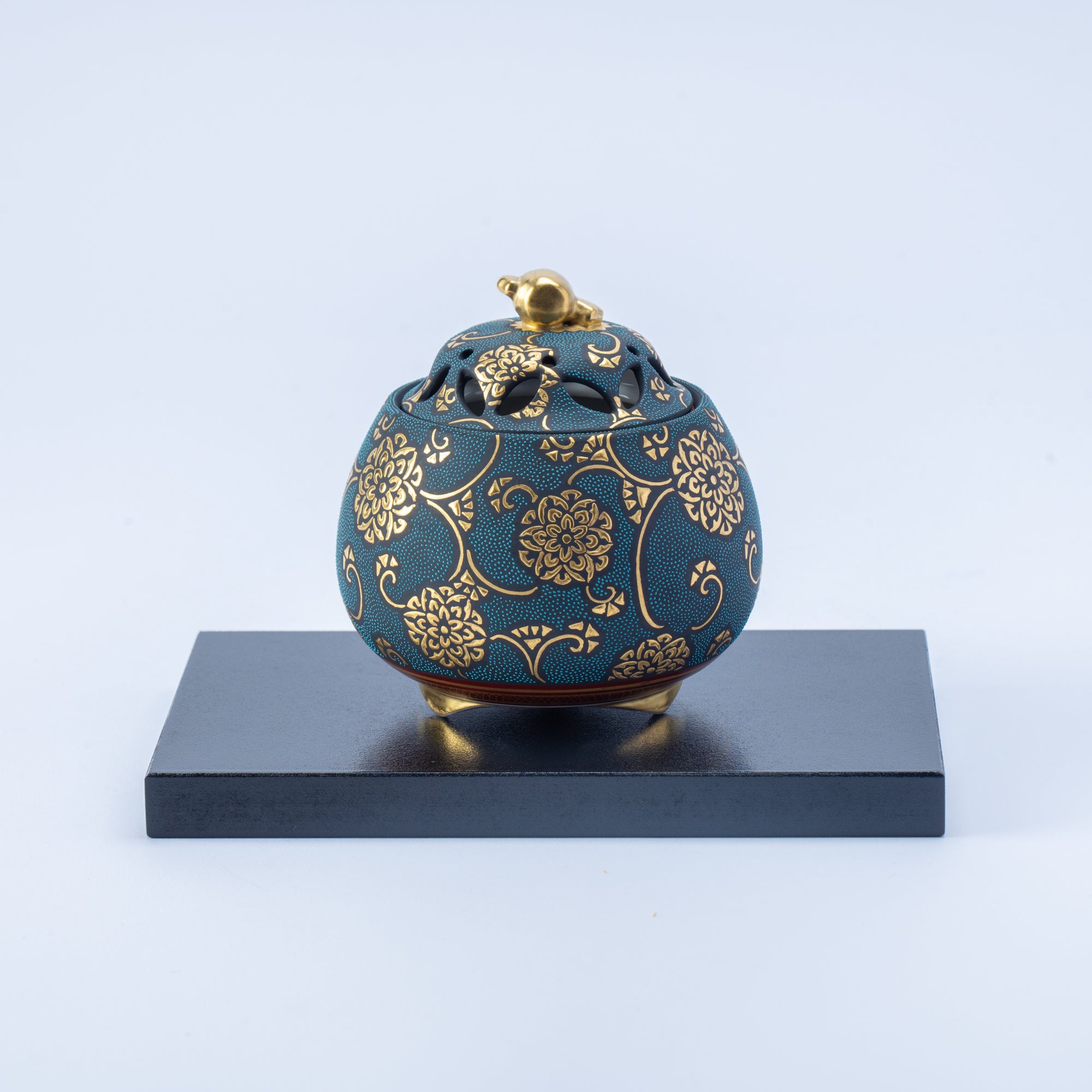


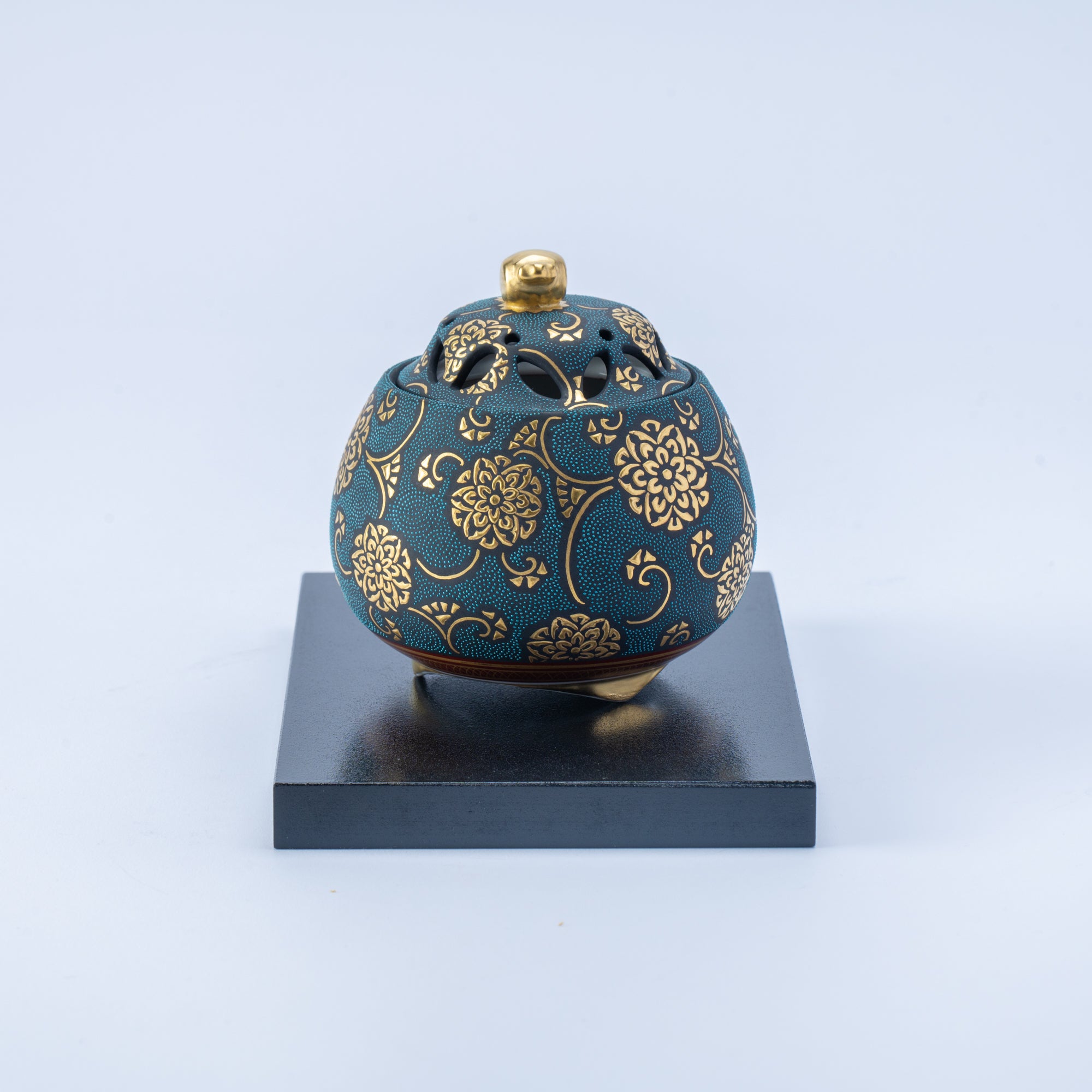
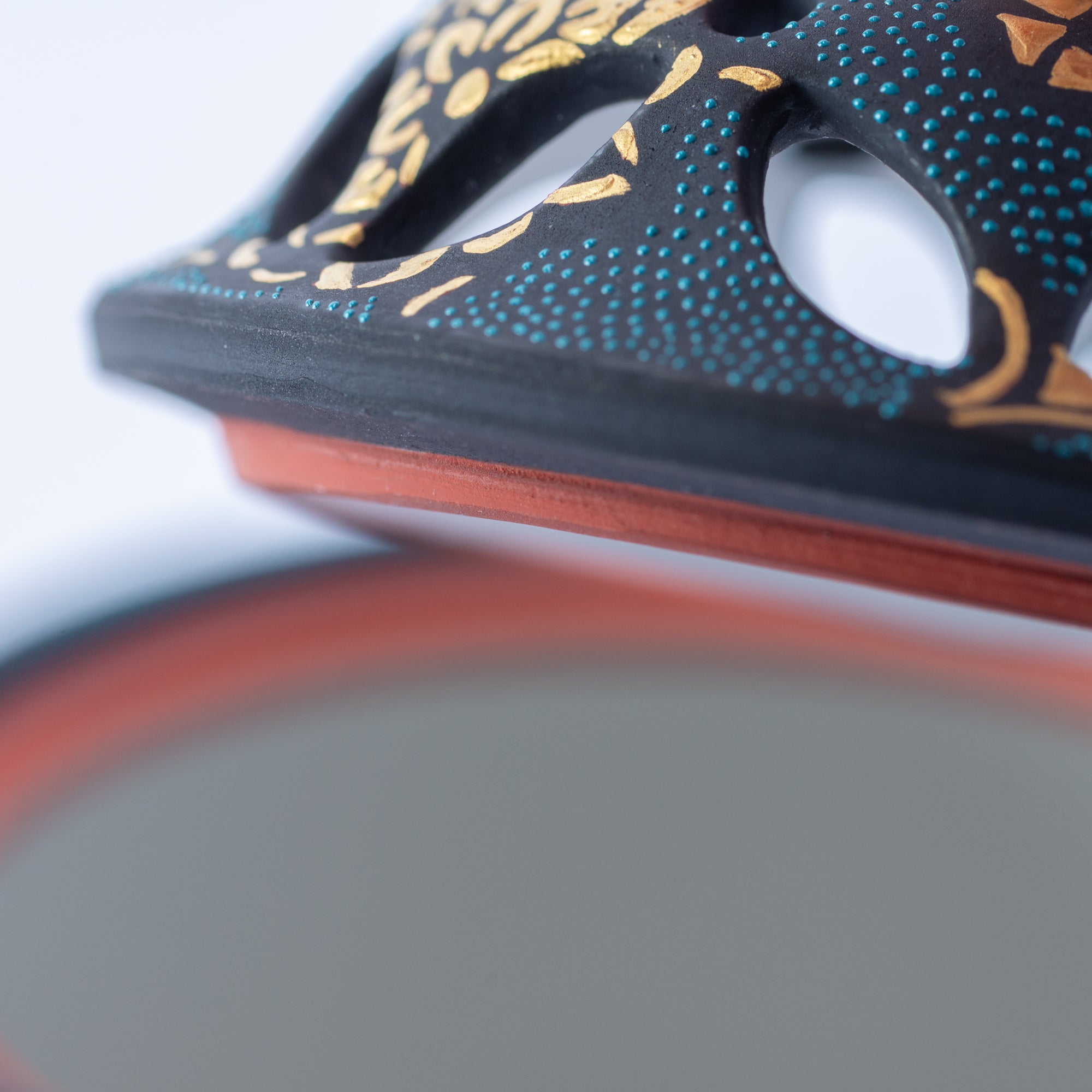
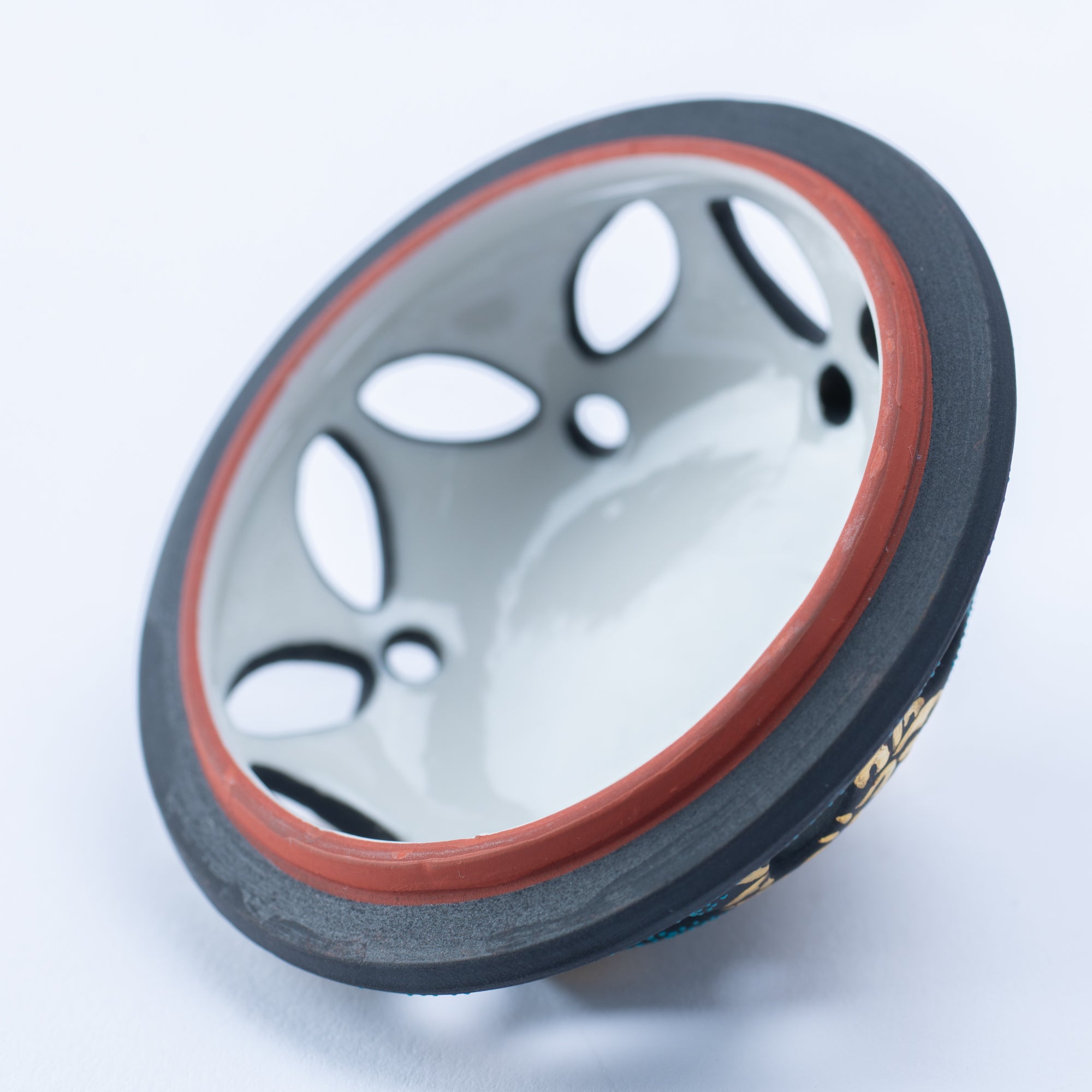
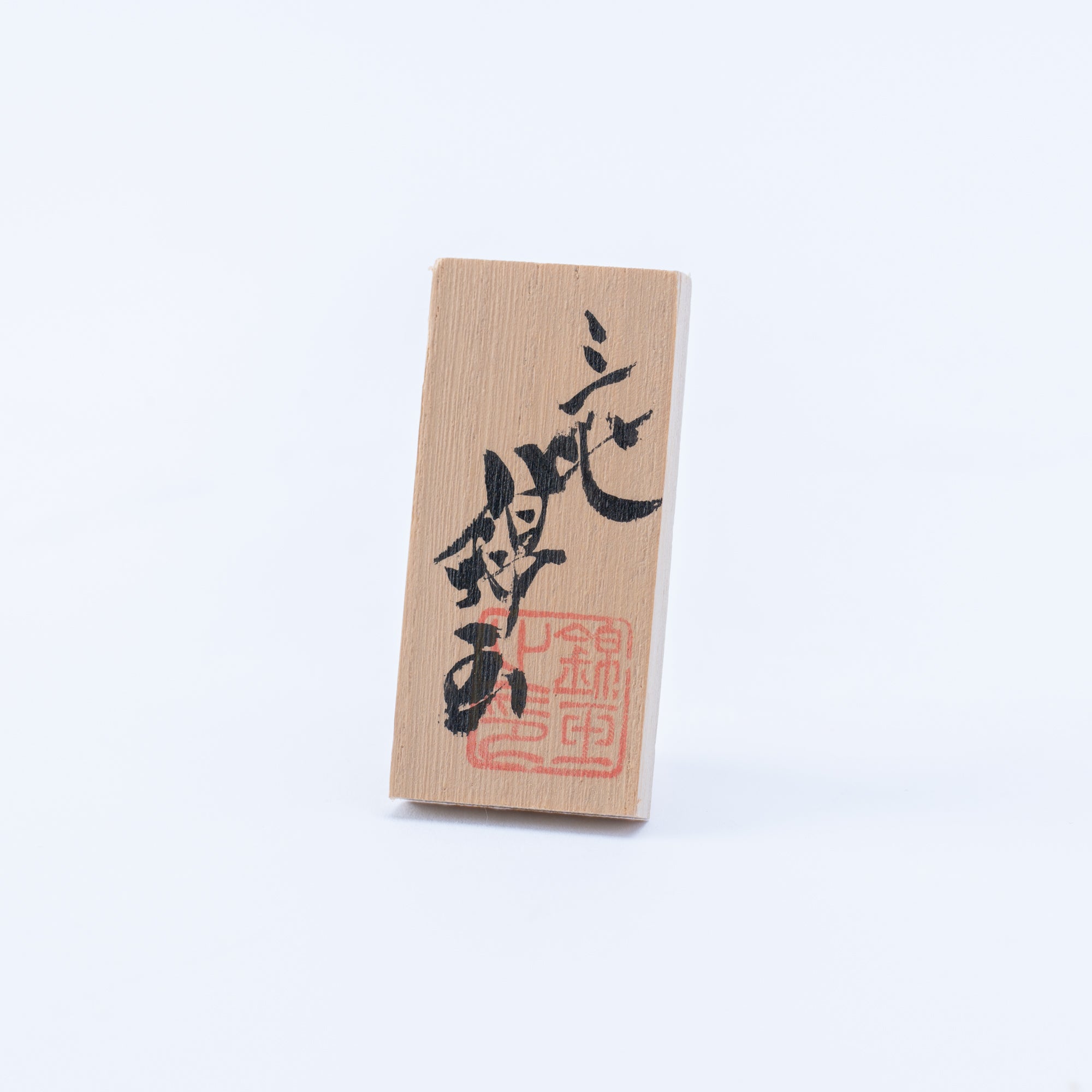
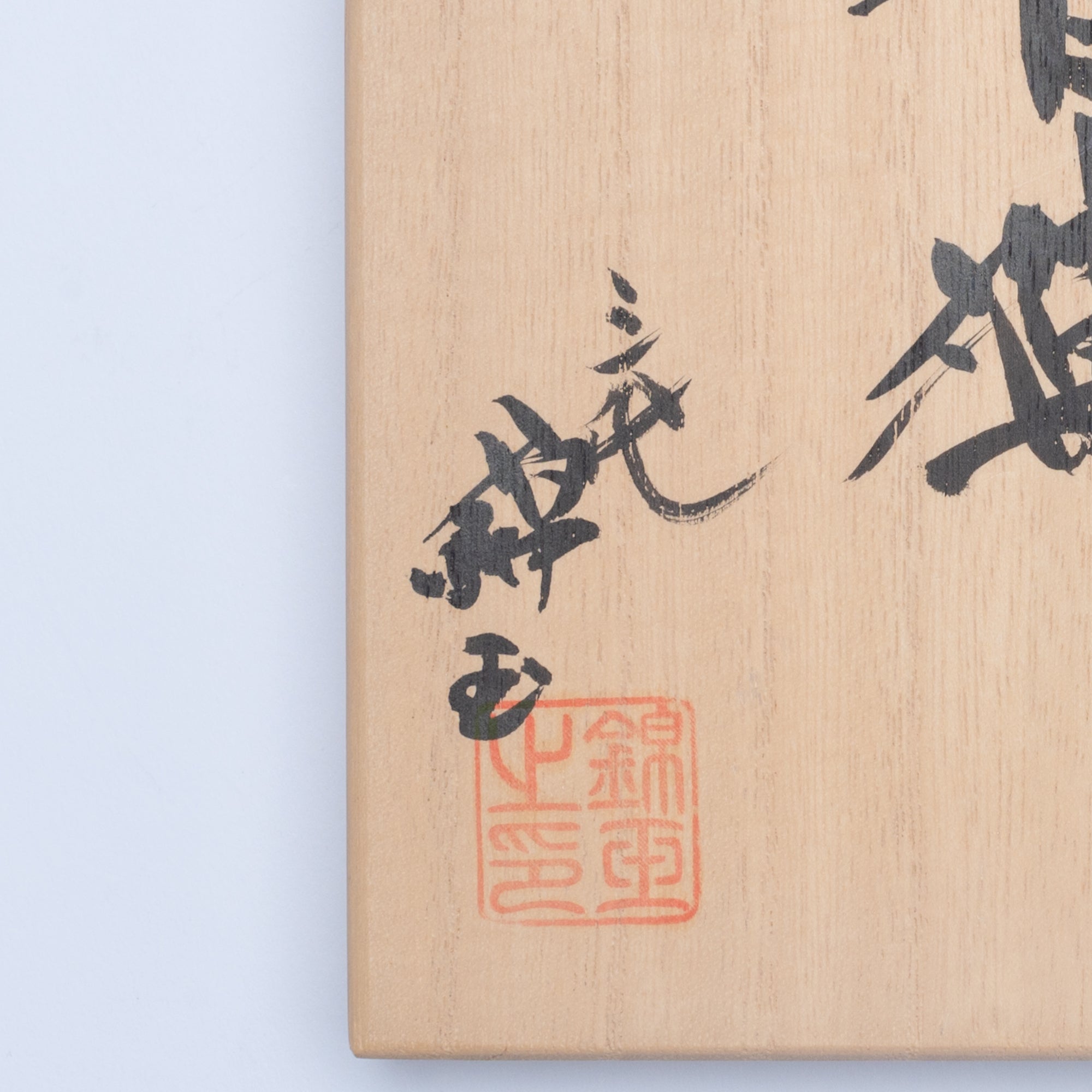

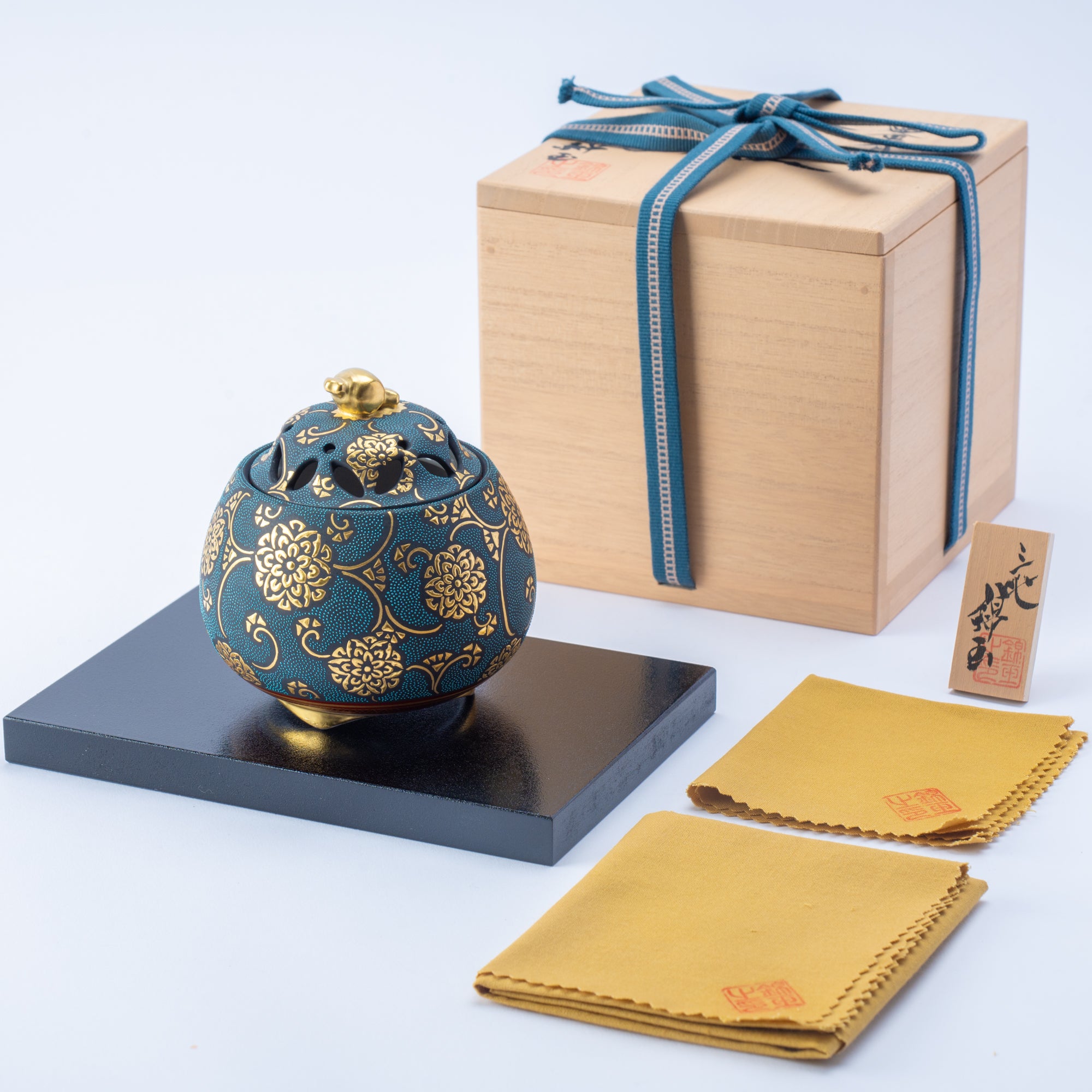
Quemador de incienso Aochibu con diseño floral arabesco de Morikin
El quemador de incienso Aochibu con diseño floral arabesco de Morikin es una obra maestra donde se utilizan técnicas antiguas morikin "oro levantado" y aochibu Los "puntos azules" convergen en una fantástica exhibición de arte. La superficie cobra vida con una serie de delicados puntos azules, aplicados meticulosamente con un... icchin, un dispensador con punta fina, que muestra un nivel de dedicación y precisión incomparable.
Adornado con delicadas capas en forma de pétalo. HoseoEste exquisito diseño floral es una variante del arabesco, ampliamente utilizado como diseño decorativo durante los períodos Nara (710-794 d. C.) y Heian (794-1185 d. C.) de Japón. Se complementa a la perfección con los adornos dorados de morikin, aplicados con gran precisión tanto a los motivos florales hosoge como a las fluidas líneas arabescas que envuelven con gracia el quemador.
El dinámico ritmo visual creado por los puntos aochibu, realzado por la profundidad y textura del oro morikin, demuestra el compromiso de Nakada Kingyoku III de combinar las técnicas tradicionales con la creatividad contemporánea. Este quemador de incienso ofrece una perspectiva innovadora sobre el diseño atemporal, respetando el legado de la cerámica Kutani y expandiendo los límites del arte cerámico con un audaz espíritu de innovación.
Con su silueta redondeada, esta pieza ofrece una presencia delicada y acogedora. La tapa perforada se puede retirar para añadir ceniza de incienso en su interior. Si bien funciona a la perfección como quemador de incienso, también es una obra de arte decorativa por sí sola, cautivando desde cualquier ángulo al colocarla en su base.
DETAILS
| Quantity | 1 incense burner, 1 wooden stand, 1 wooden plaque |
| Size |
[Incense burner] D 10.0 cm (3.9 in) x 6 cm (2.4 in) x H 10 cm (3.9 in) [Stand] 12 cm (4.7 in) x 18 cm (7.1 in) x H 1.5 cm (0.6 in) [Wooden Box] 14 cm (5.5 in) x 14 cm (5.5 in) x H 13.5 cm (5.3 in) |
| Weight | 242 g (8.5 oz) |
| Material |
[Incense burner] Porcelain [Stand] Wood |
| Package Type | Wooden box |
Maker / Brand
La obra de Nakada Kingyoku encarna el arte Rimpa con su majestuosa elegancia y su delicada belleza. Armoniza la interacción entre el espacio y la artesanía en miniatura, combinando sensibilidades modernas con técnicas meticulosas mediante la maestría de los puntos azules y el oro en relieve. Su obra no solo rinde homenaje a su legado, sino que también introduce innovaciones que elevan el estilo aochibu .
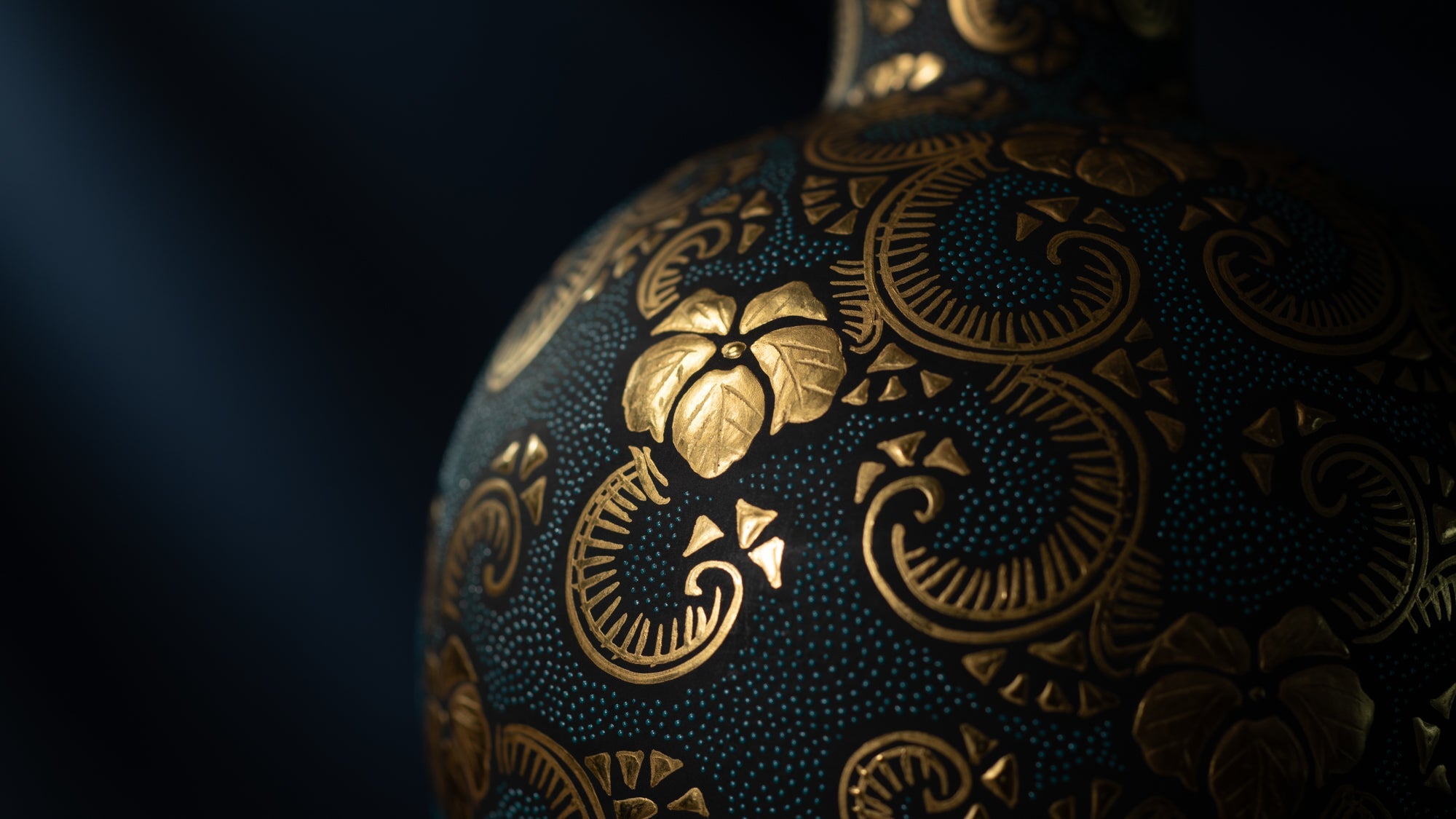
Crafts
La cerámica Kutani se produce en la región de Kaga, en la prefectura de Ishikawa, con más de 350 años de historia. Se caracteriza por el intenso brillo de sus cinco colores: azul marino, rojo, morado, verde y amarillo. que se aplican a las líneas audaces y atrevidas. Su larga historia se ha desarrollado gracias al esfuerzo incansable y al entusiasmo de quienes han buscado la innovación manteniendo la tradición.
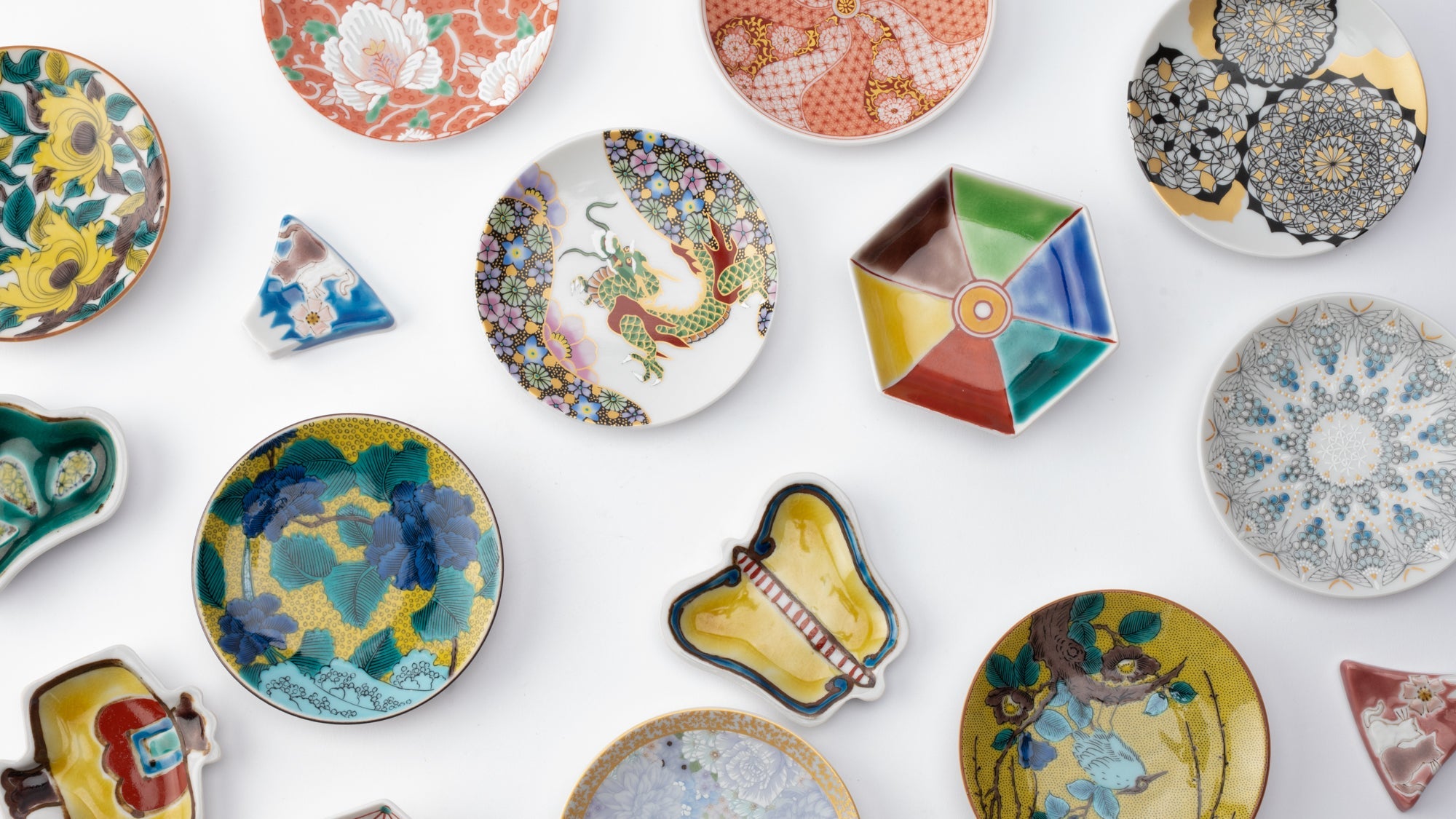
Notes
Elige opciones
About Artist
Galería Musubi
Desde sus inicios, MUSUBI KILN se ha esforzado por presentar al mundo las mejores artesanías tradicionales de maestros de todo Japón.
Aquí, en la Galería, buscamos exhibir las técnicas tradicionales más avanzadas, transmitidas de generación en generación. Podrá descubrir obras de maestros que no solo han perfeccionado estos métodos, sino que también han aportado su imaginación para innovar aún más el oficio.
Algunos de estos maestros incluso han sido nombrados Tesoros Nacionales Vivientes, un título que les otorgó el gobierno japonés para reconocer formalmente su contribución a la artesanía y la cultura, consolidando así su legado y convirtiéndolos en una parte importante de la historia del arte.
Cada pieza se elabora meticulosamente a mano durante muchos meses para crear un tesoro atemporal único. Y cuando esté en tu hogar, tú también formarás parte de esa historia.
Bienvenidos a la Galería. Les invitamos a explorarla con calma.
